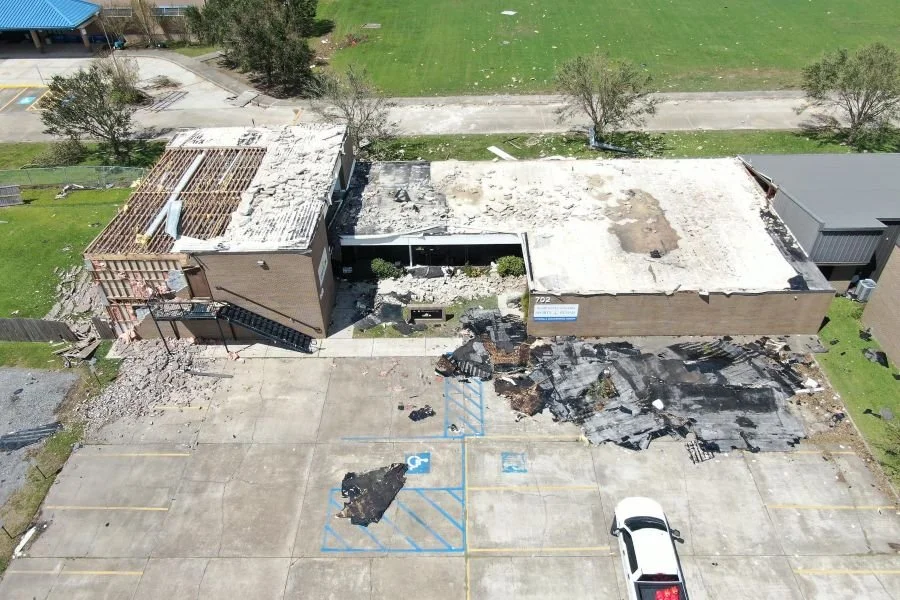The building envelope, which includes the exterior walls, roofing, windows, doors, and any exterior equipment, plays a crucial role in protecting a structure from environmental forces like wind, water, and temperature fluctuations. Ensuring the integrity of the building envelope is critical, especially in regions prone to extreme weather events such as hurricanes or high-wind storms. Conducting thorough assessments of the building envelope and exterior glazing systems is essential for maintaining long-term performance and addressing potential vulnerabilities.
Performance-Related Issues and Water Intrusion
One of the first steps in assessing the building envelope is to review any reports of performance issues, particularly those related to water intrusion. Water infiltration can signal a larger issue with the integrity of the building's exterior, including the glazing assemblies. A thorough investigation of past reports is necessary to determine whether water intrusion was a one-time event, possibly due to severe weather, or if it is a chronic issue that may require more extensive remediation.
Weather Data and Historical Wind Events
Historical weather data for the building's location can provide valuable insight into how the building has withstood past weather conditions. Researching this information helps assess whether the assemblies have been subjected to extreme wind events that could have exceeded their design limits. Even minor windstorm damage can weaken the wind resistance of the building envelope, leading to future issues. Knowing the building's weather history allows for a better prediction of how the building envelope might perform in future storms, helping owners and property managers make informed decisions on potential upgrades or repairs.
Interviews with Building Occupants
While occupants of the building may not be experts in glazing or building performance, they can still provide useful information regarding the service history and any performance problems, such as water leaks or drafts. When conducting interviews, it's essential to focus on gathering factual information rather than subjective opinions. Understanding the occupants' experiences with the building can give assessors a clearer picture of the building envelope's overall reliability and any issues that need to be addressed.
Site Inspection for Condition Assessment
In cases where research and interviews yield limited information, conducting a site inspection is critical. A detailed visual inspection allows assessors to observe the current condition of the building envelope and glazing systems firsthand. During the inspection, the following aspects should be closely examined:
Framing Systems: Assess the material composition of the frames, profile measurements, the condition of framing joints, and any signs of wind damage, aging, or corrosion. These observations help in determining whether the framing is structurally sound or if there are any construction defects contributing to performance issues.
Glass Type and Treatment: Identifying the type of glass and its treatment is vital in understanding the performance of glazing assemblies. Labels (often called "bugs") can provide information about the type and treatment of the glass, such as whether it is laminated or insulated. Additionally, glass thickness tools can be used to determine the thickness of each ply, which is crucial for assessing structural performance in wind-prone areas.
Anchor and Sealant Condition: The anchors securing the glazing to the building, their size, location, and condition should be documented. Similarly, the condition of sealants and weatherstripping is an important factor in predicting the air and water infiltration performance. Any signs of wear, cracking, or failure should be addressed to ensure continued protection from the elements.
Water Intrusion Signs: Inspect the interior finishes around windows, doors, and skylights for signs of water intrusion. Water stains, mold, or deterioration may indicate chronic leakage issues that could undermine the performance of the building envelope. Documenting these observations with field notes and photographs ensures that the severity and extent of the damage are properly recorded.
Identifying Manufacturers and Performance Labels
In many cases, older buildings may have glazing and window assemblies whose manufacturers are no longer in business. However, identifying the manufacturer can still be possible by checking for logos or labels on the framing or hardware. For newer assemblies, performance labels required by industry associations like the American Architectural Manufacturers Association (AAMA) provide valuable performance data. These labels can be cross-referenced with industry standards for the relevant time frame to verify that the glazing meets the required certification criteria.
In regions like Florida, product approval programs run by Miami-Dade County Product Control and the Florida Building Commission can provide additional product information, especially for buildings exposed to high winds and hurricanes. If labels are missing, conducting further research based on any manufacturer logos or available hardware information may help uncover critical performance data.
Wind-Borne Debris and Hurricane-Prone Regions
Buildings located in hurricane-prone areas or regions where the basic wind speed exceeds 135 mph require special attention to the glazing systems. If the glazing is not protected by shutters, it is important to determine whether the assemblies were tested for resistance to wind-borne debris using standards such as ASTM E1886 or FBC TAS 201/203. These tests, which use test missiles to simulate debris impacts, ensure that the glazing can withstand the high-speed projectiles often encountered during severe storms.
For buildings over 60 feet tall and located more than 30 feet above surrounding structures, there may be an exception to certain wind-borne debris requirements. However, damaging wind-borne debris has been documented inland, meaning even buildings outside coastal regions should consider the impact resistance of their glazing systems.
Ensuring the durability and performance of the building envelope is essential for protecting the structure and its occupants from the elements. By reviewing historical performance data, weather records, and conducting thorough site inspections, building owners and managers can identify vulnerabilities and take steps to address them. Whether upgrading glazing systems, repairing water intrusion issues, or ensuring compliance with wind-borne debris resistance standards, maintaining the building envelope is key to long-term structural health and resilience against future environmental forces.


